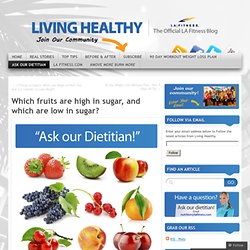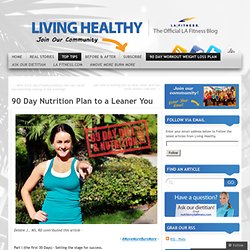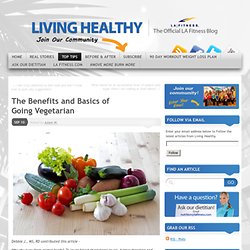

Here's When Fruits & Veggies Are In Season (Infographic) In a world where technological advances and modern transportation allow us to purchase pretty much any kind of produce we want, whenever we want it, it's easy to forget that there was once a time when what we ate depended on Mother Nature.

Have a hankering for butternut squash in mid-June? Too bad! You'll have to wait until it's in season. Of course, while it may feel great to eat a strawberry in the dead of winter, it's harder on the environment, and is also less nutritious than buying your berries when they're in season. The problem is keeping track of when those seasons are! Which fruits are high in sugar, and which are low in sugar? I eat a lot of fruits.

My doctor recently said my A1C sugar level is high & to avoid eating fruits, carbs, etc. that are high in sugar. I’m most concerned about the fruits because I eat them daily. What are the best fruits to eat that are low in sugar & what are the worst fruits to avoid that are high in sugar? –Barry T. You’re right that certain fruits are higher in sugar than others. The total carbohydrate load determines blood sugar rise, not just sugar/fructose. What you eat with the fruit matters. How much fruit you eat matters. So now, on to your high/low list of sugar content — per normal serving consumed (adapted from USDA National Nutrient Database): HIGH (over 18 grams sugar) 1/4 Cup raisins, other dried fruit 2 Medjool dates 1 mango medium 3″ apple 1 Cup grapes, European 1 Cup grapes, American slip skin medium 7″ banana full ring pineapple, 3/4″ thick medium peach, pear, or 3″ orange 10 kumquats or common dates 2 medium plums or 2.25″ fresh figs 1 Cup sweet cherries or blueberries.
90 Day Nutrition Plan to a Leaner You. Debbie J., MS, RD contributed this article - - #MoveMoreBurnMore - Part I (the first 30 Days) – Setting the stage for success.

Instead of trying to change everything at once, here is a plan that will have you adjusting your diet and nutrition habits incrementally. This allows you to acclimate and create new and healthy lifestyle habits one week at a time. Week 1: Assess where your diet is presently. 1) Record everything you eat and drink for 7 days. 2) Review and analyze your food and beverage intake with quality nutrition software or a comprehensive online program. 3) Pick your priority change. Goals should be SMART: Specific, Measurable, Attainable, Realistic and Timely. TOP TIP: Include lean protein at breakfast. Week 2: Set up a schedule or routine for your meals. Evenly spacing your meals and snacks keeps you energized and reduces hunger. TOP TIP: Pack an emergency snack to have on hand. Week 3: Create an environment for success. TOP TIP: Drink 8 glasses of water daily. #MoveMoreBurnMore. Prevent Cravings.
By Debbie M., MS, RD – If the mood strikes between meals and you are craving something in particular, should you give in?

That depends on whether the desire is really hunger, appetite or a nutrient craving. You see, the body has a pure driven need for energy expressed as hunger. Environmental cues and emotional status can trigger appetite when no true hunger is present. Thus, very rarely will you actually experience a craving for a particular nutrient. Cravings are characterized by a strong desire that you will go out of your way to satisfy. Once you determine the source of your craving you can address it appropriately. How to Manage a Craving You can use these tips to help curb your cravings. Imagine yourself engaging in your favorite activity.
Crave This, Eat That Try these alternatives to some common cravings. Preventing Cravings If you do give in, accept that it’s normal and that any nutritional damage incurred pales in comparison to beating yourself up about it. Like this: Like Loading... The Benefits and Basics of Going Vegetarian. Debbie J., MS, RD contributed this article – Why shy away from animal foods?

To lower blood cholesterol levels, better digestion and reduce the risk of certain cancers, hypertension, obesity and diabetes. Whew! Diets composed primarily of grains, legumes (dried beans, peas, lentils), fruits, nuts and seeds are generally high-fiber and low-fat, accounting for these benefits. How to Do It Right Vegetarian diets should provide a balanced intake of all essential nutrients including Vitamin B-12, riboflavin, calcium, Vitamin D, iron and zinc which are generally derived from meat, egg and/or milk products.
Here Are The Basics For Adults: Choose at least six servings of these daily: Bread, Cereal, Rice and Pasta: 4 of which should be whole-grains Choose at least three servings of each of these daily: Consume at least two servings of each of these daily: To note: plant foods offer an average of 4-6 gms Protein per 100 Calories, an amount sufficient to meet protein needs for healthy adults. Sample Menu.